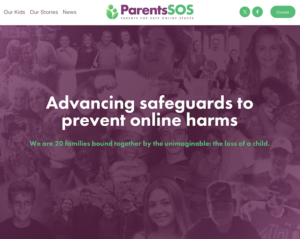The following twelve Technology Myths and Facts were compiled by Cris Rowan, pediatric occupational therapist, biologist, international speaker, and author of the book “Virtual Child”. Cris is passionate about changing the ways in which children use technology, and has developed the concept Balanced Technology Management where parents learn to manage balance between technology and healthy activities.
Referenced Research can be located on Zone’in Fact Sheet.
- Developmental Delay
Myth – There’s nothing wrong with my child, he’s just a bit behind his peers. He’ll catch up soon. Doesn’t every 6 year old have tantrums?
Fact – One in three children enter school significantly physically, mentally, socially, or cognitively delayed, causing difficulties with attention, learning, and behavior.
Developmental scale can be located on the Foundation Scale for Grades K-6 handout.
- Hyperarousal and Physical Stress
Myth – There’s nothing wrong with playing video games all day.
Fact – Being sedentary while playing video games, porn, texting, or social networking, results in an overstimulation to the sympathetic nervous system causing hyper-arousal, elevated adrenalin and eventual rise in cortisol, significantly increasing risk for early heart attack and stroke.
Video – Effects of Video Games on Blood Pressure and Heart Rate 37 min. video on Jane Pauley Show with Dr. David Walsh and gaming addict, including physical monitoring of a gamer (at 4:30 min).
- Child Mental Illness
Myth – Parents and teachers don’t cause child mental illness, they are born that way.
Fact – 1 in 7 children between the ages of 8-18 years have a diagnosed mental illness. To date, researchers have yet to discover ANY biomarkers for child mental illness e.g. genes, neuro-structural or neurochemical differences. As parents connect to devices, they are disconnecting from children, causing a host of problematic child behaviors.
Video Still Face Experiment 3 min. video depicting a baby’s experience when Mom is expressionless, like when she’s on her phone. Find out how you can build attachment with the Connection Initiatives handout.
- Technology Addiction
Myth – There’s no such thing as technology addiction.
Fact – More advanced countries such as China, S. Korea, and Japan categorized internet addiction as a mental illness in 2008, allowing the creation of hundreds of youth treatment centers. Japan is presently reporting a 60% technology addiction rate in their youth, and start educating children about tech addictions in kindergarten.
Video – China Web Junkies 7 min. documentary by New York Times about a Chinese boot-camp-style treatment center for youth “addicted” to the Internet. Check out if your child has a technology addiction with the Technology Addiction Questionnaire handout.
- Video Games and Aggression
Myth – Violent video games do not cause child aggression.
Truth – Meta-analysis study of violent video game research showed gaming for longer than 2 hour periods resulted in increased hostility, seeing violence as the only way to resolve conflict, increased impulsivity, increased intensity of violent acts, more aggressive episodes, delayed brain development, and lower verbal intelligence.
Video – Violent Video Games and Child/Youth Aggression 9 min. interview with Dr. Andrew Doan on Taylor Baldwin Show regarding impact of violent video games on child and youth aggression. Look at the Technology Usage Guidelines for Children and Youth handout.
- Pornography Use
Myth – Little kids don’t look at porn!
Fact – Age of first viewing of pornography is 6 years, and by age ten, 42% of children are active users. Pornography is endemic in video games, where children can see their hands on the person whom they are raping, torturing, and/or murdering.
Video – The Demise of Guys – Phil Zombardo 5 min. TED Talk sharing some stats (lower graduation rates, greater worries about intimacy and relationships) and suggests a few reasons — fear of intimacy from porn overuse.
- Dependency
Myth – I’d rather have my kids’ home safe on their devices, than worry about where they are and what they are doing outside.
Fact – Forced dependency of children by their parents for the purpose of keeping them home safe, has contributed to 50% of North American young adults between the ages of 20-30 years to live at home…not working, not going to school. Fostering independence while still young, prepares children for independence later in life.
Video – I can’t believe we made it 2 min. clip on why we should let kids be kids.
- Family Connection
Myth – The internet makes us more connected as humans, and as a family.
Fact – Mental illness and use of psychotropic medication (anti-depressants, anti-anxiety, anti-psychotics, sedatives, and stimulants) are at an all-time high, in children and adults. Underlying all mental illness is failure of the primary attachment between parent and child.
Video – All the time in the world 3 min. film trailer of documentary by Susan Cocker on building family purpose and cooperation.
- Movement
Myth – Reducing recess, increasing teacher instruction time, and increasing use of computers in education will improve literacy and enhance learning.
Fact – On international measures of reading, math and science, Canada is 13th and the U.S. 25th on the world stage. Countries who use more computers have lower academic performance scores. Anytime a student is sedentary is detrimental to their ability to learn.
Video – Exercise Makes Kids Smarter 2 min. news clip profiling improved student performance and behavior with daily exercise.
- Nature
Myth – There’s nothing wrong with keeping kids inside…it’s safe…right?
Fact – Nature is the most sensory soothing, attention restorative, and best learning enhancing tool available to parents and teachers.
Video – Play Again 2:30 min. film trailer on what happens when we remove children from nature.
- Managing Technology
Myth – My kids can manage their own tech devices; they don’t want their parents to make a bunch of rules.
Fact – Children like it when their parents say “No”. Having specific boundaries and rules regarding technology use, helps children feel they are loved and cared for. Spending time with children when they are young, goes a long way toward growing a functional adult.
Video – Preventing Video Game Addiction 6:00 min. video by Dr. Hilarie Cash, Director of reSTART Internet and Technology Addiction Recovery Program speaking to parents on how to prevent video game and pornography addiction.
- Productivity
Myth – The internet makes us more efficient and productive.
Fact – While originally designed to improve efficiency and productivity, adults are working 70% more, but are 40% less productive. Being “on” 24/7 is taking its toll on human productivity.
Video – No Time to Think 5 min. film trailer for documentary that explores our obsessions with devices, and asks the question “Do we really need them”?
Want to learn more about how to manage balance between technology and healthy activity? Check out the incredibly informative and fun Tech Talks for Families webinar series! Ten talks, ten hours, tech weeks and only $199! Comes with loads of strategies!





